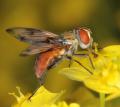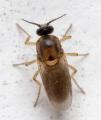Diptera.info :: Family forums :: Syrphidae
|
Cheilosia variabilis?
|
|
| blowave |
Posted on 04-12-2008 23:30
|
|
Member Location: LINCOLN, UK Posts: 3151 Joined: 27.06.07 |
Hello! This was taken on 21st July in my garden, Lincoln UK. Is it Cheilosia variabilis? Thanks!  Janet 3 pics blowave attached the following image: 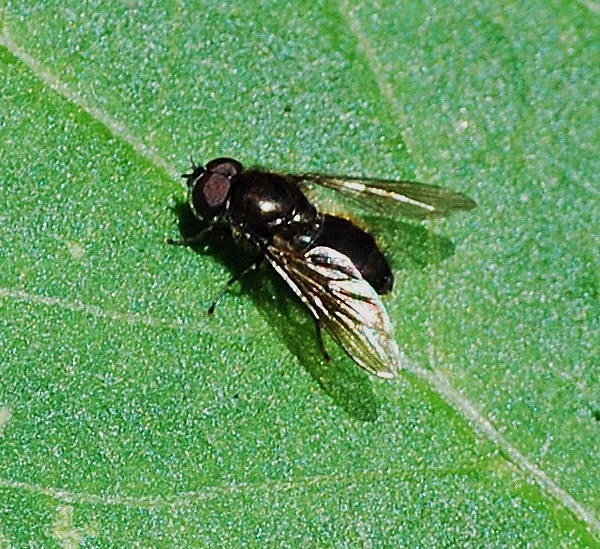 [148.54Kb] |
| blowave |
Posted on 04-12-2008 23:32
|
|
Member Location: LINCOLN, UK Posts: 3151 Joined: 27.06.07 |
Pic 2
blowave attached the following image: 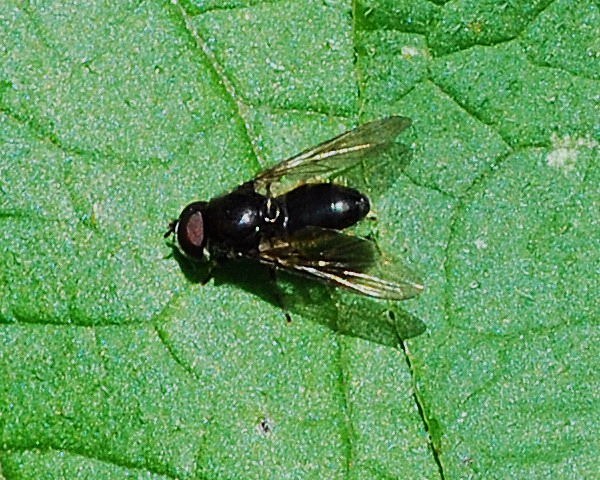 [137.19Kb] |
| blowave |
Posted on 04-12-2008 23:33
|
|
Member Location: LINCOLN, UK Posts: 3151 Joined: 27.06.07 |
Pic 3
blowave attached the following image:  [151.52Kb] |
| Andre |
Posted on 06-12-2008 14:44
|
|
Member Location: Tilburg, the Netherlands Posts: 2111 Joined: 18.07.04 |
It's too late in the season for variabilis.. Pics are not very good, but I would opt for male proxima or cynocephala. |
| blowave |
Posted on 06-12-2008 16:26
|
|
Member Location: LINCOLN, UK Posts: 3151 Joined: 27.06.07 |
Thank you Andre! There seems to be many Cheilosia! And not many pics of them, lol. There is a pic of C. proxima in the Gallery, but that looks very hairy. No pic of cynocephala. I found a list which has C. cynocephala but not C. proxima, which is for lowland grassland habitats but also calcareous, where my soil is more acidic but I do have other species which are supposed to be in calcareous grasslands. http://209.85.129.132/search?q=cache:v7HiZXDBJV4J:www.buglife.org.uk/OneStopCMS/Core/CrawlerResourceServer.aspx%3Fresource%3D8FDF9BBD-86B9-4D00-9013-8CB1E7D3AFB8%26mode%3Dlink%26guid%3D52da30a48db54a28b9f133ea5cc0715f+cheilosia+cynocephala&hl=en&ct=clnk&cd=7&gl=uk&ie=UTF-8 I found that C. cynocephala larvae feed in Musk Thistle, Carduus nutans. It is also a species of special conservation concern. Actually I found 3 food plants, Carduus crispus and Cirsium palustre also. http://www.brc.ac.uk/DBIF/invertebratesresults.aspx?insectid=1937 This site says it was recorded in 2006 in Shropshire, the first record since 1947! But that is not my area. http://209.85.129.132/search?q=cache:BrTUCc9efc4J:www.insectpix.net/files%2520for%2520downloading/SIG%25202006%2520Annual%2520Report.rtf+cheilosia+cynocephala&hl=en&ct=clnk&cd=10&gl=uk&ie=UTF-8 It is also recorded in Cambridgeshire at Dogsthorpe Star Pit but I would need to download a pdf to get the full write up. I found that is next to Peterborough, which is not very far south from me. http://pbc.codehog.co.uk/site_reports/dogsthorpe_star_pit_map.htm I found a pic of C. proxima male, and it certainly looks a possibility, but the pic is worse than mine! http://syrphidae.com/specie.php?genus=Cheilosia&specie=proxima&continent=Europe The habitat for C. proxima does seem to be closer to mine, although the food plants mentioned were much the same as C. cynocephala for the larvae. "Woodland edges and rides, scrub and hedgerows. White umbels such as Heracleum, and flowering bushes such as Crataegus & Prunus spinosa" http://209.85.129.132/search?q=cache:8XqFe83Ih14J:www.staffsmoorlands.gov.uk/downloads/Table5TerrestrialInvertebrates.xls+cheilosia+proxima&hl=en&ct=clnk&cd=6&gl=uk&ie=UTF-8 C. pagana and C. proxima are the only Cheilosia mentioned on that site, but it is Staffordshire which is a litte more south and to the west. I also had C. pagana though, maybe this would swing it to C. proxima? As C. cynocephala is not far to the south of me I couldn't rule it out though! The species name cynocephala makes me wonder if it is to do with the colour cyanea, and my fly does have a bluish tinge. C. proxima looks just plain brown. cyanea.... From greek cyanos, "blue", Andre, what is your gut instinct? If you would rather not say I don't mind!  Janet |
| blowave |
Posted on 07-12-2008 01:17
|
|
Member Location: LINCOLN, UK Posts: 3151 Joined: 27.06.07 |
I came across another which seems to fit mine to perfection, lol! Cheilosia albitarsis , on close inspection mine has little white feet! Would that be correct for this, it sounds correct.  The shape looks spot on too! The shape looks spot on too!http://www.veluwe...losia.html This time I remembered to make my URL clickable!  |
| Andre |
Posted on 10-12-2008 22:10
|
|
Member Location: Tilburg, the Netherlands Posts: 2111 Joined: 18.07.04 |
I noticed the tarsae too, but the pics are too bad in quality to exclude (how do you call that in English)... bias? Anyways... for albitarsis it is way to late in the season. If it indeed does have light tarsae, ranunculi may be better in place. |
| blowave |
Posted on 11-12-2008 00:06
|
|
Member Location: LINCOLN, UK Posts: 3151 Joined: 27.06.07 |
Thanks for the lead Andre, I had a quick search for C. ranunculi and it seems fairly rare, but I do have rare! It also likes water, I have water! Haven't found any pics though. It definitely has white feet! The front legs I see on C. albitarsis have a white area above the tarsi, not visible at all on mine, and as you say, not the correct time. Good to eliminate! If there are no others with white feet, I can call it C. ranunculi? If I had a good macro lens I may have got better pics, but then I might not have. It was a quite small fly, and it took off and landed agian briefly so I managed to get two quick pics each time. There are advantages of a minimum shooting distance of 1.1 metres!  Janet |
| Andre |
Posted on 12-12-2008 09:33
|
|
Member Location: Tilburg, the Netherlands Posts: 2111 Joined: 18.07.04 |
Call it cf ranunculi, it can not be a 100% ID, sorry... |
| blowave |
Posted on 12-12-2008 15:20
|
|
Member Location: LINCOLN, UK Posts: 3151 Joined: 27.06.07 |
Good enough for me, thanks Andre!  |
| conopid |
Posted on 12-12-2008 16:17
|
|
Member Location: United Kingdom Posts: 1039 Joined: 02.07.04 |
I'd be tempted to say it could be C variabilis. The long wings and the way it is holding them delta style are very reminiscent of variabilis. But (agreeing with Andre) I have only ever found it once after mid June, as a single record for 20 July - in the UK.
Nigel Jones, Shrewsbury, United Kingdom |
|
|
|
| blowave |
Posted on 12-12-2008 17:13
|
|
Member Location: LINCOLN, UK Posts: 3151 Joined: 27.06.07 |
Hum, well, now what do I say, lol! This was a cold summer, and insects can be somewhat out of season, and your record Nigel is only one day different!  The question is, does Cheilosia variabilis have white feet? I have one more pic with the wings closed, but I don't suppose that will help. It was the way the wings were held which gave me the clue, but I know nothing about other Cheilosia species. blowave attached the following image: 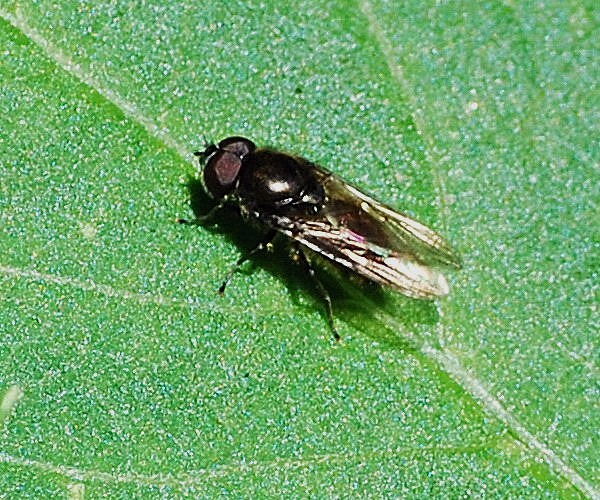 [147.86Kb] Edited by blowave on 12-12-2008 17:13 |
| Andre |
Posted on 12-12-2008 18:47
|
|
Member Location: Tilburg, the Netherlands Posts: 2111 Joined: 18.07.04 |
There are no boundaries in life, everything is possible (except staying alive  ) ) |
| blowave |
Posted on 12-12-2008 19:46
|
|
Member Location: LINCOLN, UK Posts: 3151 Joined: 27.06.07 |
Hmm. not so sure about (except staying alive  ) but I will take your word for it! ) but I will take your word for it!    |
| conopid |
Posted on 14-12-2008 14:33
|
|
Member Location: United Kingdom Posts: 1039 Joined: 02.07.04 |
Intriguingly I don't think any of the UK Cheilosia have white tarsi. albitarsis and ranunculi have pale yellowy-brown tarsi, rather than white, but as Andre says, the white may be a function of photo quality, rather than actual colour. I don't suppose you caught and kept the specimen? If so it would be easy to identify it if you post to me. Best wishes Nigel Jones, Shrewsbury, United Kingdom |
|
|
|
| blowave |
Posted on 14-12-2008 16:19
|
|
Member Location: LINCOLN, UK Posts: 3151 Joined: 27.06.07 |
Sorry Nigel, I didn't capture it, and if I had I wouldn't know what to feed it   . I barely managed to get pics of it! The camera is a Nikon D40X, the colour is usually true with Nikon, known to be the most true I believe. Light was good too, and the tarsi do look white at all angles taken. . I barely managed to get pics of it! The camera is a Nikon D40X, the colour is usually true with Nikon, known to be the most true I believe. Light was good too, and the tarsi do look white at all angles taken. |
| blowave |
Posted on 14-12-2008 16:23
|
|
Member Location: LINCOLN, UK Posts: 3151 Joined: 27.06.07 |
Actually with a bit of imagination, and the fact the tarsi are so small, with sun glare they could be a washed pale yellow-brown! Looking at the middle tarsi or even the front and back ones in my last pic they could be that! |
| Andre |
Posted on 14-12-2008 19:41
|
|
Member Location: Tilburg, the Netherlands Posts: 2111 Joined: 18.07.04 |
White/yellow/pale/pale-brown... it's the same thing  |
| Jump to Forum: |





